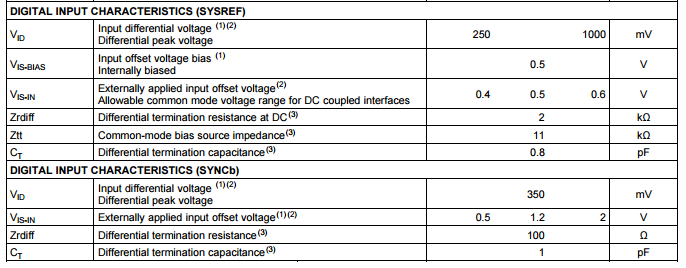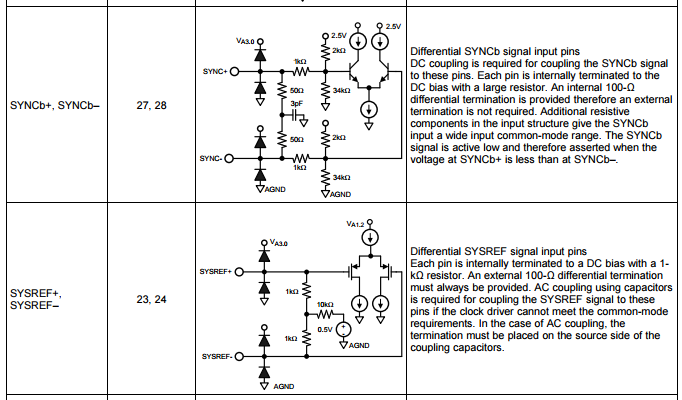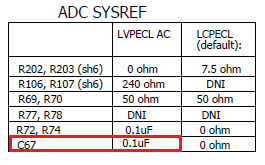Dear Technical Support Team,
I have some questions about ADC34J45.
The datasheet describes just typical specification of VIH、VIL、V(CM_DIG) for SYNC and SYSREF.
It is difficult to make an interface schematic for ADC34J45 with these datasheet specs.
On the other hand, ADC16DX370 describes the details of DC spec and internal schematics.
And it says the recommendation of DC or AC coupling.
1.)
Do you have the detail of DC spec and internal schematics of Pin Functions(SYNC and SYSRE)?
2.)
How should we deal with V(CM_DIG)?
Which dose it describe internal or external common-mode voltage range?
3.)
SYSREF seems to be ac coupled(LVPECL AC) on ADC34J45EVM schematics( Page.4 on ADC34JXXEVM-SCH_C.pdf ).
Does V(CM_DIG) effect for internal common voltage?
4.)
SYNC is converted from LVDS to LVPECL on ADC34J45EVM schematics( Page.4 on ADC34JXXEVM-SCH_C.pdf ).
How Input differential voltage(VID) can SYNC pin accept ?
Can it accept VID for LVDS?
ADC34J45 datasheet doesn't show it.
Best Regards,
y.i






